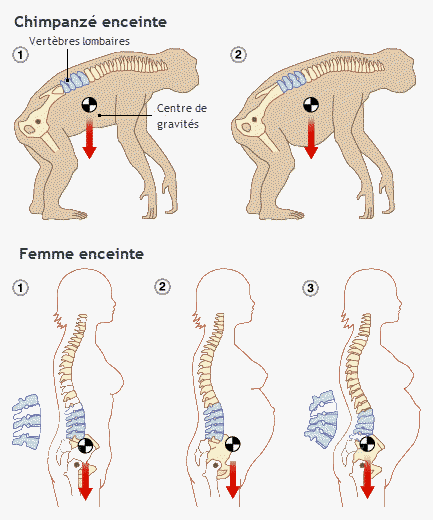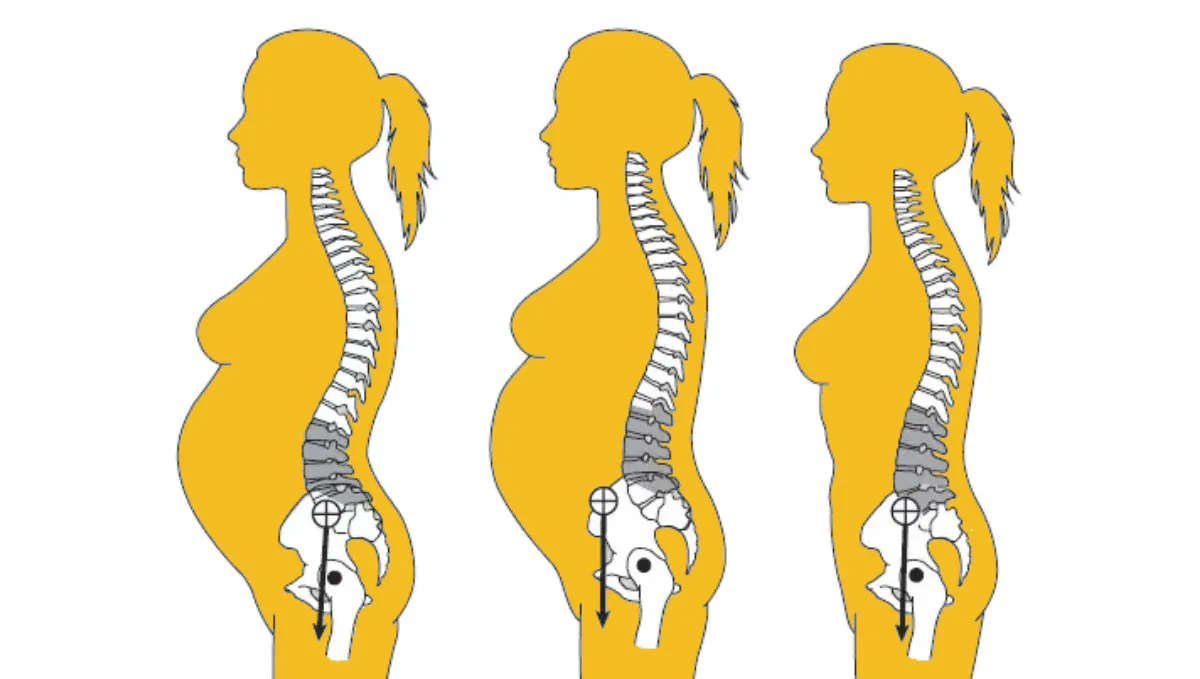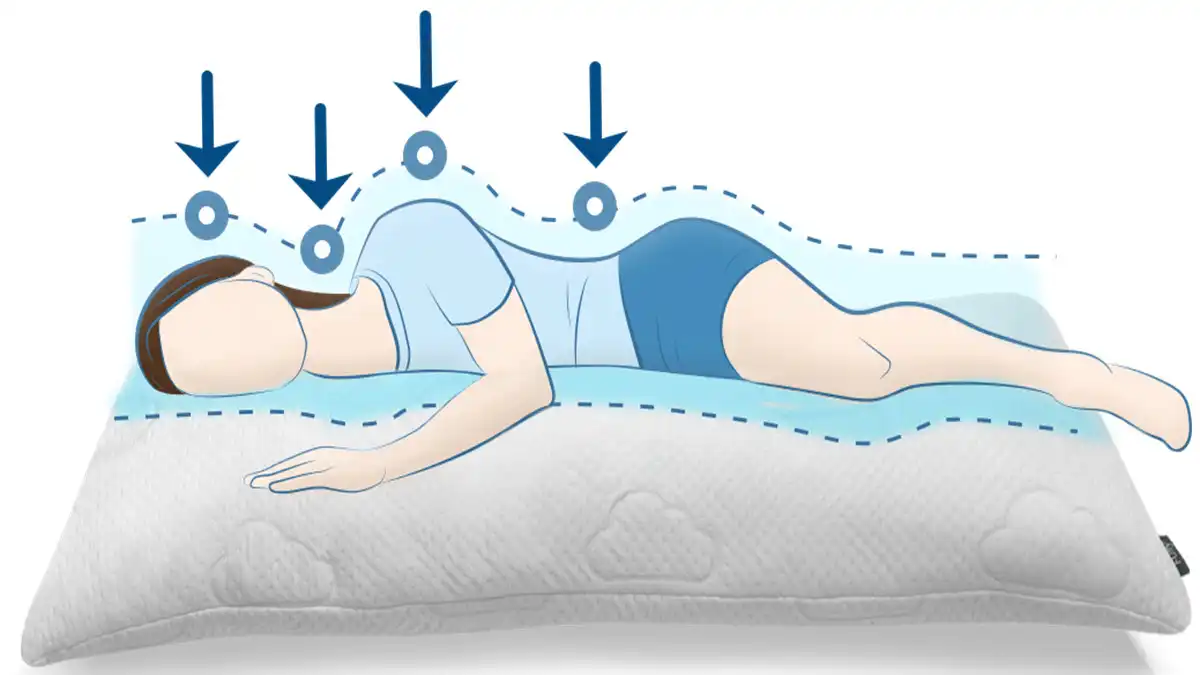Scientists have long observed that pregnant women tend to lean back to avoid tipping over. However, this posture may place increased pressure on their spine, leading anthropologists to hypothesize that women’s lower vertebrae evolved to reduce this pressure during pregnancy.
The resilience of the female body during pregnancy is a marvel of nature, and it is fascinating to observe the complex mechanisms that protect the health of the mother and unborn baby. Several factors contribute to this stability and explain why pregnant women do not tip over despite the many physiological challenges they face.
First, the pregnant woman’s body undergoes significant adaptations to meet the growing needs of pregnancy. The precisely orchestrated hormonal system regulates various processes to support fetal growth and development. This hormonal orchestration helps maintain the internal balance necessary to ensure the well-being of mother and baby.
Furthermore, the body has natural protective mechanisms that limit potential risks. The uterus, for example, provides a physical and biological barrier, protecting the fetus from external attacks. Additionally, the immune system undergoes subtle adjustments to avoid excessive responses that could compromise the pregnancy.
In addition, regular medical monitoring plays a crucial role in preventing unwanted shifts. Health care professionals carefully monitor maternal health, anticipating and treating possible complications before they become problematic.
In summary, the remarkable stability of pregnant women is based on precise biological and hormonal orchestration, natural protective mechanisms, and careful medical monitoring. This complex combination of factors ensures an optimal environment for fetal development, demonstrating the exceptional robustness and resilience of the female body during pregnancy.
In primates, the weight of a pregnancy is located under the belly, while in humans it is located in the front, pushing the body’s center of gravity forward and causing an imbalance.
Shapiro and his fellow researchers, winners of the Lg Nobel Prize in 2007, discovered the mechanism. By studying 19 pregnant women, they observed that a woman’s lumbar curve spans three vertebrae, while in men it spans two. Additionally, the joints between the vertebrae are wider in women and angled differently compared to men, providing better support for the added weight.
The study by Shapiro et al. (year of publication and full title of the study) has played a crucial role in understanding the anatomical adaptations in pregnant women to maintain stability. Researchers have likely used methods such as medical imaging, 3D modeling, or other approaches to closely examine the structure of the spine and associated adaptations.
The study methodology could have involved detailed observation of pregnant women during different phases of pregnancy, analysis of tissue or bone samples, or the use of advanced medical imaging technologies to examine the ongoing anatomical changes.
As for the results, Shapiro and colleagues may have identified significant differences in the spinal structure of pregnant women compared to those who are not. This could include specific adjustments in the lumbar curvature, the size of the joints between the vertebrae, or other anatomical features that contribute to stability during pregnancy.
Including these details would strengthen the scientific validity of the text by showing that the claims are based on specific results from serious research. This would also allow the reader to have increased confidence in the text’s conclusions about the stability of pregnant women and why they do not tip over.

The theory was solidified when a difference was identified in the female remains of Australopithecus, a prehistoric “relative” of humans. The researchers said that if the change had resulted from direct evolution following the adoption of bipedal walking, some hominids – our prehistoric ancestors – would also show traces of it.
The researchers attribute this divergence to an adaptation that emerged at least two million years ago in an early human ancestor. Since this difference is not observed in chimpanzees, they believe that the adoption of bipedal walking led to this adaptation.
This adaptation allows women to modulate their posture to maintain their balance and alleviate lower back pain, even during the last months of pregnancy, a period during which the abdomen can weigh almost 7 kg more than normal.
The accentuation of the lumbar curvature in women would thus have facilitated escape from predators during pregnancy. Without this adaptation, these women would have been vulnerable to crippling back pain.
In the absence of this adaptation, pregnancy would have placed a greater load on the back muscles, causing considerable pain and fatigue. This would have potentially limited the ability to forage for food and escape predators.
Liza Shapiro
Harvard University
The anthropologist claimed: “Natural selection has favored this adaptation because it alleviates the additional stress placed on a pregnant woman’s spine.

In men, the upright posture cannot cope as well, because the center of gravity is pushed forward later in pregnancy.
Scientists believe that women have developed a more pronounced curvature in the lower spine compared to men to allow them to lean back more and stay balanced.

























